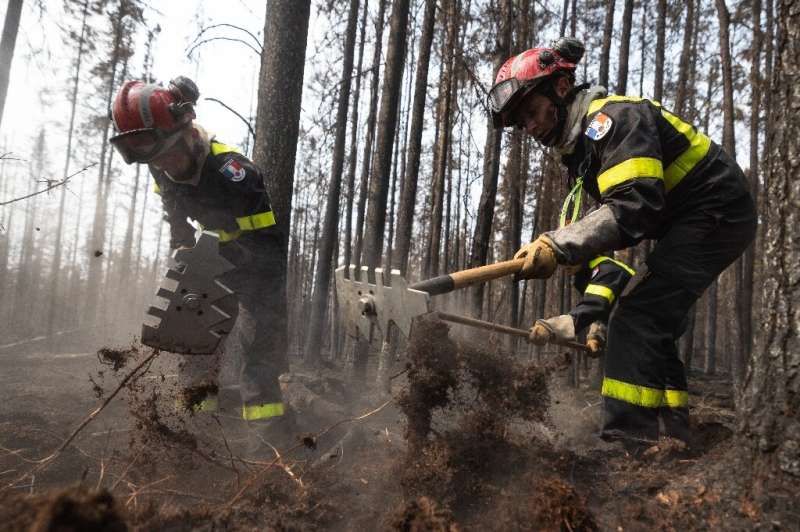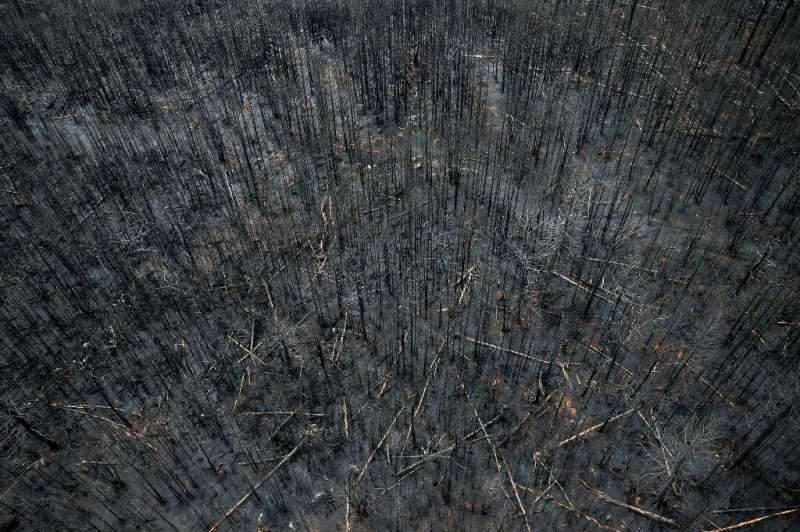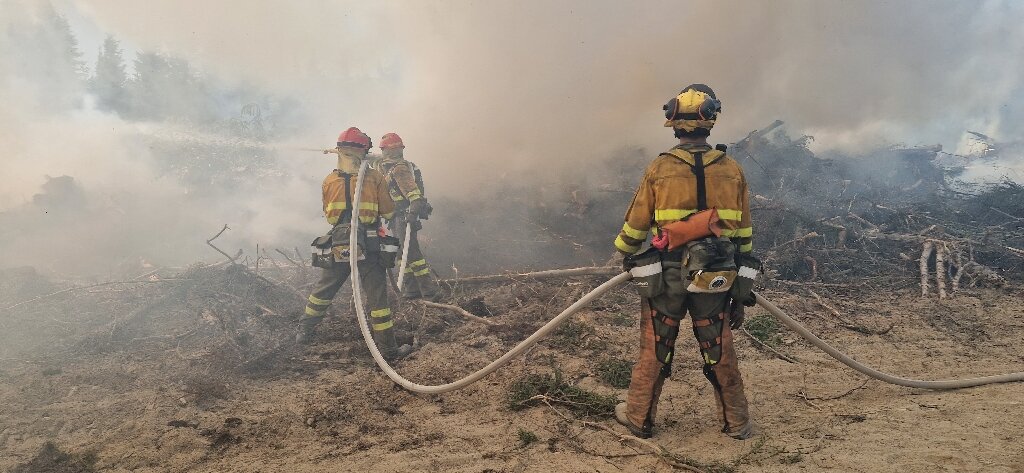International firefighters who have come to Canada’s aid in battling unprecedented wildfires are faced with a challenging mission. The fires, which have devastated large areas of the boreal forest, present a complex and unpredictable situation for these brave firefighters.
The leader of a French firefighting team deployed in Quebec, Eric Flores, expressed his astonishment at the severity of the situation. While working on smoldering duff to prevent flare-ups, his team was suddenly caught off guard as a fire erupted just 50 meters behind them in a seemingly safe part of the forest.
“The fire can spread underground along roots, reaching unexpected areas. It’s highly unpredictable and can intensify rapidly,” Flores explained in a phone interview from northern Quebec.
He described the painstaking efforts of his team, who advance meter by meter in their firefighting efforts. These firefighters are often dropped off by helicopter and then have to hike several kilometers carrying their equipment before they can reach the affected areas within the dense forest.
Amidst the thick smoke, black flies, and mosquitoes, they face extraordinary challenges. Flores compared the magnitude of the blazes in Canada, which are 100 times larger on average than those in his home country of France, to a towering wall of flames double the height of trees.

Let it burn
“The country is engulfed in smoke, but considering the scale of the fires, it’s not surprising,” said Godefroy, a French soldier deployed in Quebec. He pointed out that at the end of June, there were nearly 500 active wildfires in Canada, with half of them listed as being out of control.
Given the shortage of firefighters in Canada, even with the assistance of international teams, it is impossible to combat all of the fires simultaneously. Therefore, authorities have decided to let some fires burn in sparsely populated areas while focusing on preventing their spread.
Joseph Romero, a Costa Rican firefighter deployed in Alberta, expressed his astonishment at how quickly a small ember can ignite a new fire, emphasizing the need for constant vigilance. He explained that this unprecedented fire season showcases the climate challenges that lie ahead for Canada. The boreal forest, which is the world’s largest intact forest, is increasingly under threat from wildfires, releasing large amounts of carbon and contributing to global warming.
So far this year, almost eight million hectares of land have been burned, stretching from British Columbia to the Atlantic provinces.

Fires smoldering underground
“Here, there is a layer of fuel on the ground, ranging from 20 to 30 cm in thickness, making the fire more challenging to control. It can spread over several kilometers, burning underground,” explained David Uruena, a Spanish firefighter deployed in Quebec.
This phenomenon, known as humus, is characteristic of the boreal forest and is partly responsible for the large plumes of smoke that have enveloped Canada, as well as drifting over to the United States and Europe, affecting major cities.
Ditiro Moseki, a firefighter from South Africa deployed to Western Canada, revealed that they often have to dig deep to reach the fires smoldering underground. He highlighted how even after it rains, smoke can still be seen the following morning, requiring constant monitoring and follow-up actions.
Ongezwa Nonjiji, a team leader, compared the speed at which the wildfires spread to be shocking. Embers carried by the wind can travel several kilometers and ignite new fires, posing additional challenges to the firefighters.
Cindy Alfonso, a firefighter from Costa Rica, expressed her surprise at witnessing healthy green trees burning. She explained that even slightly moist conifers can burn due to their highly flammable resin.
The sap in these trees acts as an accelerant, enabling fast-moving fires to jump over obstacles, such as roads. These devastating fires in the boreal forest release 10 to 20 times more carbon per unit of area burned compared to other ecosystems, contributing to the vicious cycle of global warming.
© 2023 AFP
Citation:
Foreign firefighters come to the rescue in Canada’s wildfires (2023, June 28)
retrieved 28 June 2023
from https://phys.org/news/2023-06-foreign-firefighters-canada-wildfires.html
This document is subject to copyright. Apart from any fair dealing for the purpose of private study or research, no
part may be reproduced without the written permission. The content is provided for information purposes only.



